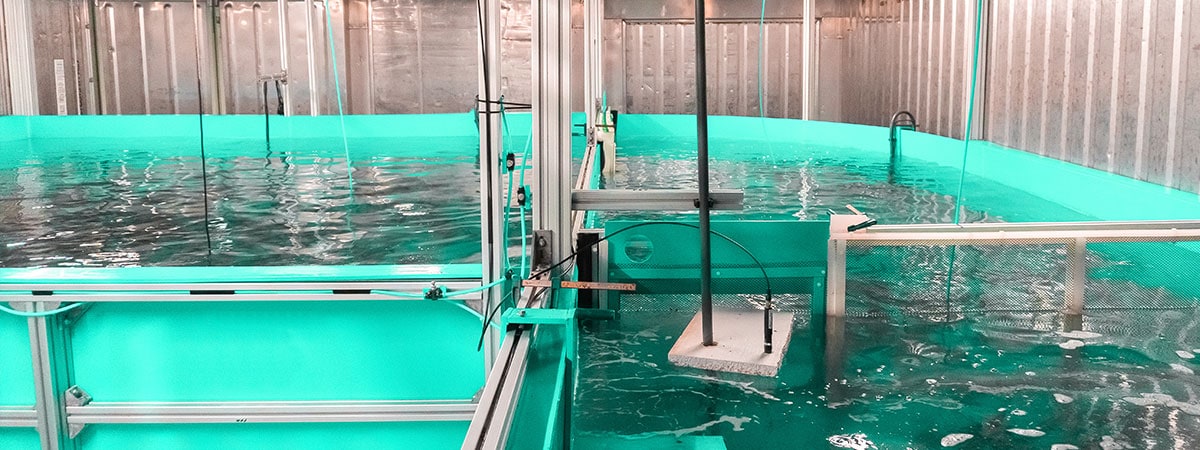Fish farming tank

The central component of an aquaculture facility is the bearing tank. Its dimensions and capacity influence both which fish species can be held (body size, swimming behavior) and the annual production volume (water volume, number of cohorts, stocking density). But what are the different types of fish tanks and which species are kept in our facility? In the following we give a short overview.
Common in aquaculture are many single, mostly round tanks. On the one hand, these are available at very low cost and on the other hand, the cohort model can be easily implemented. Only fish of a certain size and age are assigned to each tank (=cohort). If the fish of a cohort are too large for one tank due to growth, they are transferred to the next larger tank. The individual round tanks are each connected with pipes and are also connected to the filter technology by pipes. There are several pumps that transport the water through the system. However, this high piping and pumping effort is a disadvantage of the single tank variant. On the one hand, the long pipelines favor a loss of pressure and thus energy. On the other hand, this leads to higher costs. Another disadvantage of the round tank variant is that the animals are moved either mechanically or with a landing net when they are moved to another tank. This handling causes stress and often damages the fins and the protective slime layer on the skin of the animals. This makes the fish susceptible to pathogens.
In the SEAWATER Cube, we decided on a single large basin with a special geometry. This allows us to reduce the piping to a minimum and also reduces the required pump energy and saves costs. In addition, the shape of the basin optimizes the flow towards the filters, thus facilitating water purification.
The holding area is divided into three sections, each of which is separated by special nets. Each tank section houses fish of a different life stage: fries (up to 50g), juveniles (up to 150g) and market-ready animals (up to 400g). The size of the individual tank sections is selected so that a stocking density of approximately 65 kilograms of fish per cubic meter of water volume is never exceeded. There are literature references that state that for sea bass, stress in the animals is only detected from 100 kilograms of fish per cubic meter upwards. We are well below this level, as we want to raise the animals as gently as possible.
In each tank section the fish live for 4 months. The transfer is contactless and almost stress-free through sluices in the net construction. Consequential damages of the fish due to an impairment of fins or slime layer are excluded. When the fish are fully grown after 12 months at the latest, they are fished out manually with the landing net instead of with machines. This protects the fish and keeps the stress as low as possible, which ultimately can be tasted in the flesh of the fish.
Further informationen about the SEAWATER Cube
Check out more facts about our system and the technology.
Image source
SEAWATER Cubes